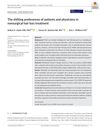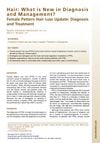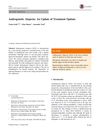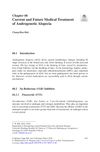Study shows further evidence that finasteride and dutasteride take 12-18 months or more to show significant results. Do NOT give up early Finasteride/Dutasteride 9/25/2023
The conversation discusses the effectiveness of finasteride and dutasteride in treating hair loss, emphasizing that significant results often take 12-18 months or more. Dutasteride is generally considered superior, with similar or fewer side effects than finasteride, but patience is required for noticeable improvement.
View this post in the Community →
Similar Community Posts Join
5 / 1000+ resultscommunity Age 18 vs Age 25, the importance of starting early
An 18-year-old began using Finasteride and Topical Minoxidil for hair loss, later switching to Oral Minoxidil and Dutasteride by age 25. The conversation emphasizes early treatment, potential side effects, and differing opinions on medication effectiveness.

community Can I still save my hairline at age of 15?
A 15-year-old is concerned about hair loss, possibly at Norwood 2 or 3, and is using shampoos and conditioners recommended by a trichologist. Suggestions include considering topical minoxidil and consulting a doctor about topical anti-DHT treatments like finasteride or RU58841, but avoiding 5-alpha-reductase inhibitors at this age.
community Finasteride, dutasteride, and oral min- My experience
User took Fin for 3 years, Dut for 7 months, and oral Min for 2 months without side effects. Fin stopped hair loss for 2 years, Dut maintained hair, and oral Min regrew thinning hair.
community Don't give up on finasteride folks
Finasteride may take over two years to show results and can cause side effects like sexual dysfunction and emotional changes. Alternatives such as dutasteride and minoxidil are discussed, with varying effectiveness and side effects.
community One year anti androgen update CROWN
User used Finasteride, Dutasteride, and Minoxidil for one year to treat hair loss. They discussed possibly trying RU58841 or pyrilutamide in the future.
Related Research
6 / 1000+ results
research Androgenetic Alopecia: Therapy Update
There are many treatments for common hair loss, but more trials are needed to decide which are best.

research The Shifting Preferences of Patients and Physicians in Nonsurgical Hair Loss Treatment
Minoxidil and Finasteride are the most popular hair loss treatments, with rising interest in other options, and economic or health crises can change what treatments people prefer.

research Hair: What Is New in Diagnosis and Management?
Female pattern hair loss diagnosed by scalp appearance, treated with combined therapies and targeted approaches.

research Androgenetic Alopecia: An Update Of Treatment Options
Minoxidil is the only FDA-approved topical drug for treating male or female pattern hair loss, and other medications like finasteride and dutasteride can also increase hair growth.
research 26-SNP Panel Aids Guiding Androgenetic Alopecia Therapy and Provides Insight into Mechanisms of Action
Genetic profiling can improve androgenetic alopecia treatment by predicting drug response and minimizing side effects.

research Current and Future Medical Treatment of Androgenetic Alopecia
Treatments for hair loss vary, but cell-based options may be the future.